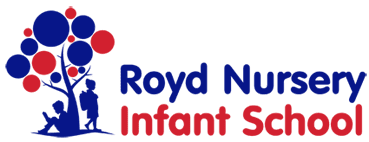Writing
At Royd the aims for teaching writing are to develop effective writers who can:
- communicate meaning and express their thoughts clearly and coherently;
- organise and structure sentences grammatically using punctuation;
- use acquired skills and knowledge to attempt to spell words correctly;
- write in a variety of styles for different audiences and purposes;
- present work in a legible, clear, neat way.
From the new curriculum the two main programmes of study for writing are Transcription (spelling and handwriting) and composition (articulating ideas and structuring them in speech and writing)
It is essential that teaching develops pupils’ competence in these two dimensions.
In addition, pupils are taught how to plan, revise and evaluate their writing.
Shared Writing
Teachers will model the writing process regularly with the children and encourage their involvement. This can involve brainstorming, planning, drafting and editing work. Children also have opportunities to work collaboratively with their peers.
Emergent Writing
Children are encouraged to develop both their gross and fine motor skills to prepare them for the experience of writing. When at the emergent stage of writing children are encouraged to mark make as a way of representing their ideas and are then encouraged to read this back, demonstrating an understanding that text carries meaning. In conjunction with regular phonics activities they can then progress to the use of symbols and recognisable letters in their mark making. Other skills that will be developed include writing from left to right and grouping symbols or letters in order to represent a word.
Independent Writing
Independent writing is a useful tool for formative assessment and for informing the teacher of where to take the children next. For this reason, when writing children should be encouraged to be as independent as possible, calling upon the strategies taught previously. The nature of this task can give children a real sense of achievement and boost their self-esteem. Teachers should provide opportunities for regular practice as this can encourage more reluctant writers to ‘have a go’.
Handwriting
It is important for pupils to be able to write clearly and develop a fluent and legible handwriting style. The school follows a cursive handwriting scheme which is model in Reception and introduced more formally when that child has the appropriate hand control.
Spelling
Our aims for teaching and learning within spelling are to enable children to:
- Recognise letters and the sounds they make.
- Attempt words for themselves using a range of strategies.
- Write an increasingly wide range of words from memory.
- Use a variety of resources to help with spelling e.g. dictionaries, word banks and the classroom environment.
- Begin to develop an understanding of spelling patterns and rules.
- Use a range of strategies to learn spellings.
